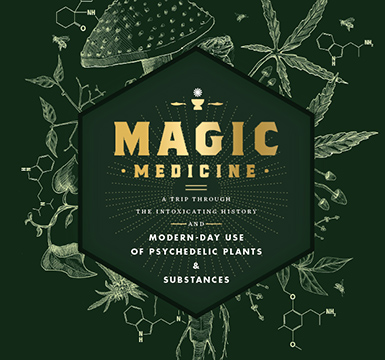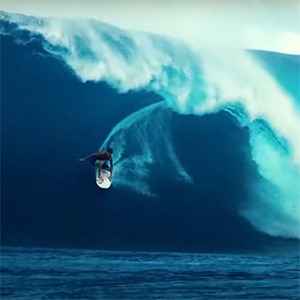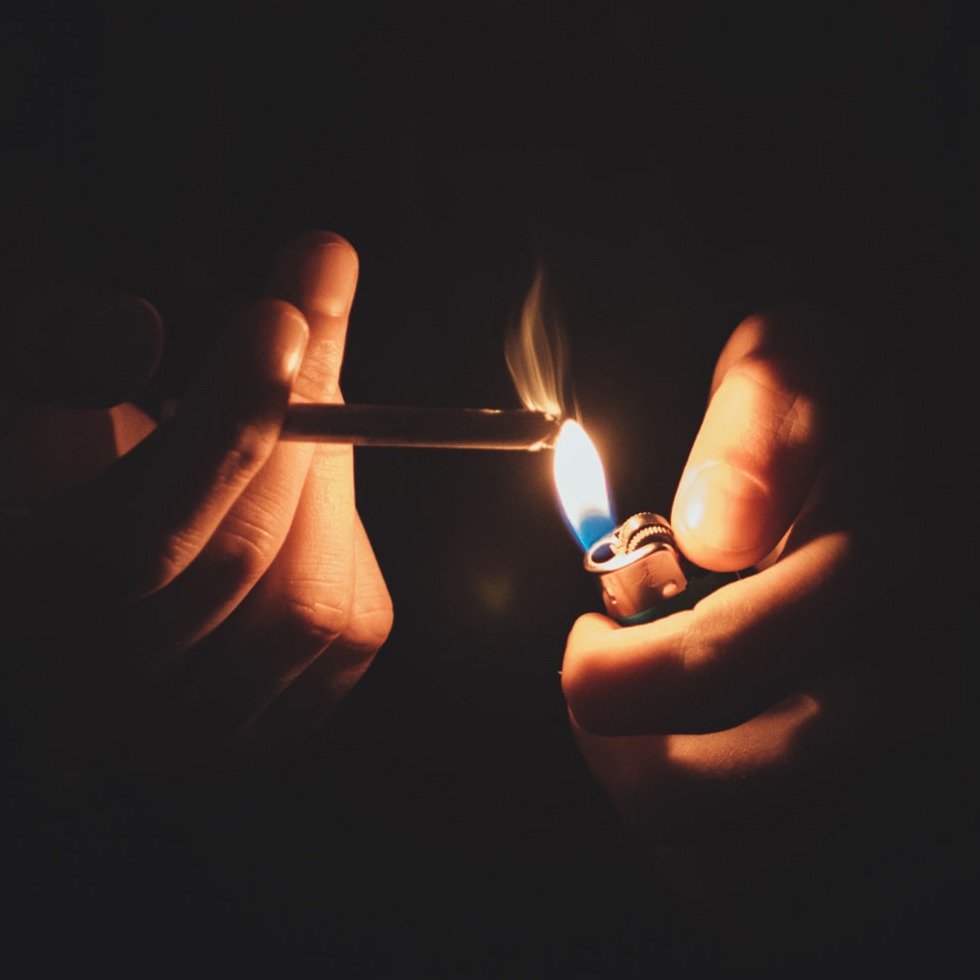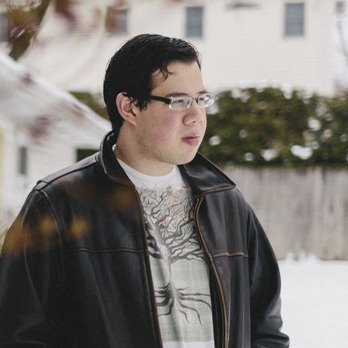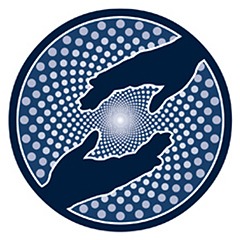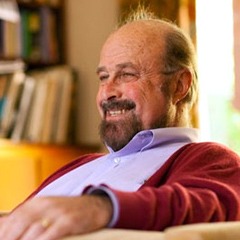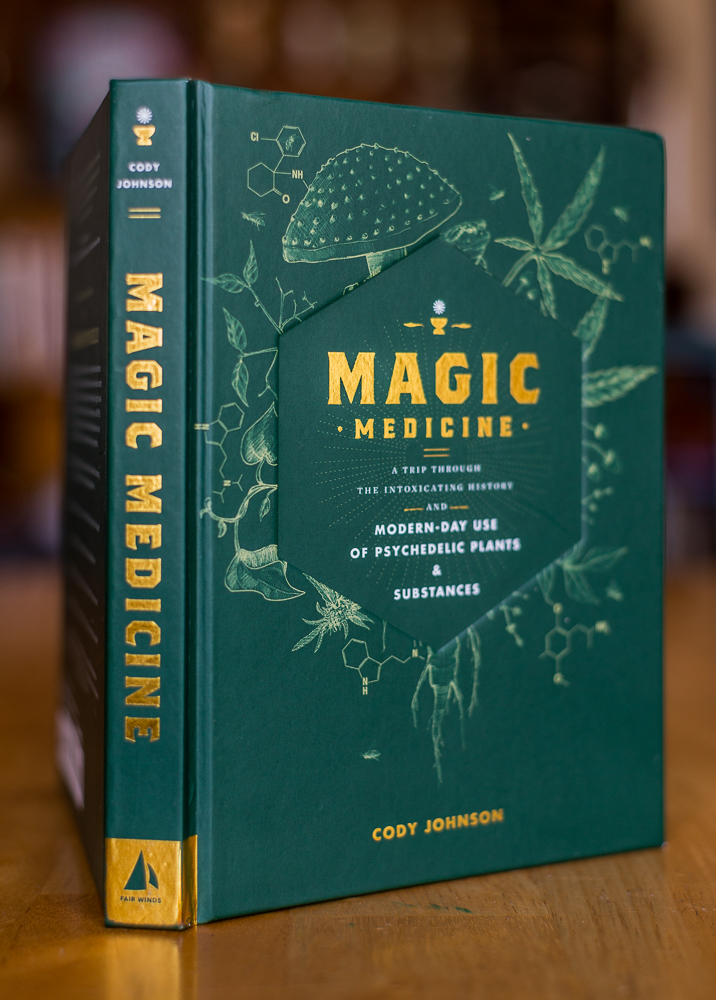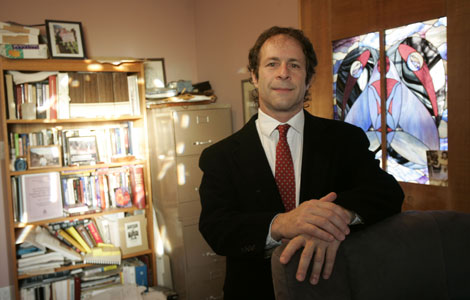
Rick Doblin, Founder and Executive Director of MAPS
Yesterday, Rick Doblin and ten other MAPS staff members engaged in an online “Ask Me Anything” session on Reddit. The turnout was phenomenal. Questions ran the gamut from personal (“Have you ever tried psychedelics?”) to political (“Will the legalization of psychedelics will come next after marijuana?”) and much more.
Several posters asked about minimizing the risk of MDMA toxicity, while others were curious about treatments for cluster headaches, depression, autism, and other conditions. A couple people even asked if MAPS accepts Bitcoin (as of yesterday, they do). As you might expect, the answers from MAPS staff were incredibly informative and insightful.
It can be a hassle to sift through all the replies on Reddit, so I have copied the questions and arranged them by topic below. This was a live online interview, so please excuse any typos made in the questions and answers. My omissions and minor changes are indicated in square brackets.
Psychedelics and Society
Hey Rick et al. Matt Johnson here from Johns Hopkins. […] What do you think the world would be like today if psychedelic research (including therapeutic use research) had not shut down in the 1970? That is, both in terms of medicine and the larger culture.
Hey Matt! If psychedelic research had not been shut down in the 1970s, and if the cultural crackdown had not taken place, I believe there is a very good chance that the United States would never have invaded Iraq and that the War on Drugs would have ended. The reason I say this is that the whole process of scapegoating and finding external enemies is in part because of our inability to handle our own flaws and imperfections, which we then project outward. Also, the process of dehumanization, the demonization of others, is reduced if we have a culture where spiritual experiences and a sense of unity are more widespread, and where we realize that we share more in common in other people than we have differences.
The UNESCO charter says, “Since wars begin in the minds of men, it is in the minds of men that the defenses of peace must be constructed.” I think the psychedelic mystical experience is one of the strongest defenses of peace that can be constructed. Albert Einstein said that the splitting of the atom changed everything but our mode of thinking, and that as we “drift toward unparalleled catastrophe,” what shall be required by mankind to survive is a whole new mode of thinking. This new mode of thinking is, I believe, a spiritual orientation.
For me personally, and for many others, psychedelics, more so than traditional religious rituals, have opened the door to spiritual experiences. I therefore think that if our culture had mainstreamed psychedelics in the 1970s rather than demonized them, 45 years later we would have am ore spiritual world, a more compassionate world, and would be dealing with the stresses of globalization in much healthier ways.
-Rick Doblin, Ph.D., Founder and Executive Director
Do you think public opinion of psychedelics has improved over the past few decades? Also, do you think sites such as Erowid have been effective at providing more accurate information regarding psychedelic substances?
Public opinion has improved dramatically, especially considering that we are finally able to research on benefits and risks of drugs like MDMA, LSD, and psilocybin. Sites like Erowid and Bluelight are excellent for providing accurate information about the risks and benefits of all drugs. They also post user reports about the experiences that these drugs can produce. We were the first fiscal sponsor for Erowid and are currently the fiscal for Bluelight. We are proud to work with these organizations and many others!
-Rick Doblin, Ph.D., Founder and Executive Director
[…] Recently, Dr. Mark Kleiman got the most enviable job in drug policy: he won a consulting contract to advise WA state on marijuana legalization. A recent profile of the brilliant, grumpy, eccentric Kleiman ended with a prediction from him that said the experiment “would end in tears.” Are Kleiman’s fears justified? […]
Which jurisdiction is doing the best job with legalization: CO, WA. or Uruguay?
Do you think that after the legalization laws go into effect in January, it will be easier to do research on cannabis, esp. high-CBD straings?
The vast majority of Amuricans are ok with MMJ. A bare majority are okay with recreational MJ. When will people be ok with psychedelics? Why can’t all the veterans get access to psilocybin and MDMA to help with PTSD?
What do you think of my man Dr. D. Nutt in the UK?
Mark Kleiman was my mentor at the Kennedy School and he was my dissertation adviser. I have great respect for him, but at the same time, we often disagree. I think that his recent opinion in the New Yorker is wrong that the legalization experiment would end in tears. I don’t think legalization is necessarily the answer, but it will be better than the policies currently surrounding prohibition. Prohibition already causes oceans of tears.
So far, I think the best model for legalization is Colorado and Washington. They are both trying to have a medical and recreational market. This still won’t allow us to do research with the medical marijuana allotted for research that is being monopolized by the . We want to urge the Obama administration to provide researchers access to the monopoly supply of marijuana controlled by National Institute of Drug Abuse (NIDA) so that we can open up our medical marijuana for PTSD research initiative.
I love Dr. David Nutt! He gave a great talk at our recent conference.
-Rick Doblin, Ph.D., Founder and Executive Director
How do you feel about health classes in schools teaching kids about the only negative sides of drugs such as MDMA and marijuana?
I believe in an honest drug education for kids. I believe that it’s an ineffective antidote for drug abuse if schools only teach kids about the potential harms of drug use. Talking about negative effects is not the whole story. We need to talk about the positive and negative potential of these substances. This education approach won’t prepare the kids for the decisions they need to make in life.
There is more than one appropriate response. Some may choose to use, some may not. Providing education about only negative effects communicates that kids should make the decision not to use, because that’s the only decision. It doesn’t have any credibility.
The best way to distinguish drug abuse is to paint a balanced picture. We can communicate harm reduction messages by speaking about the positive effects, which is dependent on set and setting. We are not promoting drug use because we are not telling kids to do drugs or not do drugs. We are trying to provide balanced education. We want them to have the best education and to make those choices.
-Rick Doblin, Ph.D., Founder and Executive Director
Ibogaine
Can you explain what the typical person who does ibogaine experiences? […]
[A salvia] trip literally gave me enlightenment on 2 different events that happened way earlier in my life. It was quite frightening that I was able to understand something subconsciously and a drug brought it to my consciousness so many years after it happened. Is iboga something similar to that that lets them not need certain drugs anymore?
Claudio Naranjo was a pioneering psychiatrist in the 1960s and 1970s who used ibogaine with some of his patients. I am quoting here from his book ‘The Healing Journey,’ which you can buy from the MAPS online bookstore:
‘In broad terms it can be said that archetypal contents and animals are prominent among the visions produced by both, and the actions involved in the plot of dreamlike sequences frequently involve destruction or sexuality. The salience of animals, primitives, sexual themes, and aggression in ibogaine experiences would justify regarding them as drugs that bring out the instinctual side of the psyche.’
Alper (2001) also writes:
‘Within 1 to 3 hours…the predominant reported experiences appear to involve a panoramic readout of long-term memory…and ‘visions’ or ‘waking dream’ states featuring archetypal experiences such as contact with transcendent beings, passage along a lengthy path, or floating. The term ‘oneiric’ (Greek, oneiros, dream) has been preferred to the term ‘hallucinogenic’ in describing the subjective experience of the acute state…4 to 8 hours after ingestion, the volume of material recalled slows. Attention is still focused on inner subjective experience rather than the external environment, and it is directed at evaluating the experiences of the acute phase.’
There is probably also a significant element of cultural setting to these experiences–an initiate into the Bwiti religion in Africa will probably have a significantly different experience than an American attempting to shake a substance abuse issue at a medical clinic.
-Ben Shechet, Clinical Study Assistant
[…] I used [Iboga] twice, 1 week apart to help conquer my opiate addiction. It worked like nothing else ever did. […] I don’t understand why something proven so beneficial is still illegal here in the U.S. Are you currently doing any research using Ibogaine?
I’m glad to hear that ibogaine was so helpful for you.
We are doing research into the potential medical benefits of ibogaine in Mexico and New Zealand. It is observational research focusing on the long-term outcomes from participants exiting ibogaine clinics. This is not drug development where we administer the substance ourself. This is due to a lack of funding.
As to why it is illegal, it does not make much sense to me. It is an extremely difficult experience that is not often abused. LSD dealers were caught with ibogaine in their possession, so the government assumed they should prevent access to it.
NIDA provided $5 million in funding preliminary research into 18-MC, a non-psychedlic version of ibogaine. NIDA is against altering consciousness in general, but they waited a decade to do research into the non-psychedelic version of ibogaine.
The drug war is irrational, and my hope is that ibogaine will eventually become more widely used to treat addictions around the world.
One key lesson we learned from this study is the importance of after-care. Your story of using it twice and having it be a cure is a minority rather than majority. Most clinics focus on the experience and do not focus on after-care to integrate.
I had my first ibogaine experience in 1985 and it has proven to be one of the most important psychedelic experiences in my life. Leo Zeff administered it to me when we were suing the DEA in 1985 in order to help me work through my owns issues so that I would be more effective as a political advocate for MDMA research.
Ibogaine helped me separate my self-criticism and self-hatred, and expanded my to access to my self-critical mind in a very positive way.
-Rick Doblin, Ph.D., Founder and Executive Director
The Future of Psychedelics
Do you think the legalization of psychedelics will come next after marijuana?
I think people are OK right now with medical psychedelics. Non-medical psychedelics will probably take another 20-30 years. Veterans can only get access to MDMA to help with PTSD in the context of research, but we currently predict MDMA will be available as a prescription medicine for PTSD in 2021. I think Dr. Nutt is fantastic and is working with us to start an MDMA-assisted psychotherapy for PTSD study in the UK.
I think marijuana will be legalized in 2024. The big leaps are made in presidential elections years because the voters are more sympathetic in those years, so we’ll have major strides in 2016, further progress in 2020, and by 2024 marijuana should be legal nationally.
-Rick Doblin, Ph.D., Founder and Executive Director
What do you see as the major road blocks in allowing clinical psychedelic research to restart in the US? And how is MAPS working to overcome them?
We have already overcome the major road blocks. The only road block we currently face is the one stopping us from conducting clinical research into the medical potential of marijuana. We are working scientifically and politically to overcome obstacles put in place by the war on drugs.
-Rick Doblin, Ph.D., Founder and Executive Director
Do you think that the legalisation of recreational cannabis will be good or bad for research into medicinal uses of the other substances MAPS investigates?
The legalization of recreational cannabis would be good for research into the medical benefits of marijuana, as well the other substances we investigate.
Right now there is more research than in the past 40 years, but not any clinical research trying to develop marijuana into a medicine. One of the reasons we are focusing on doing this research is to establish the principle of science over policy.
-Rick Doblin, Ph.D., Founder and Executive Director
What is in your opinion the “most likely to succeed” psychedelic drug for positive medical applications?
MAPS is working to open the field of psychedelic medicine. All psychedelics have different effects and different potentials. MDMA is the most likely to succeed initially for PTSD because it is more gentle than the other psychedelics, because it is more likely to be accepted by psychiatrists and psychotherapists. It will lead the way to other legitimate uses of psychedelics.
MAPS and the Heffter Research Institute are in a friendly race to see whether MDMA or psilocybin become a prescription medicine first.
-Rick Doblin, Ph.D., Founder and Executive Director
What do you see as the next big hurdle for publicly funded research grants?
NIMH has not funded psychedelic research since the mid-1960s, but we hope that will change over the next few years. We are currently developing a research grant proposal to send to the NIMH in order to move forward with our PTSD research.
We are also in discussion with the VA and DOD about the concept of treating veterans suffering from PTSD with MDMA-assisted psychotherapy. It that may take several more years before we engage in a collaborative study and receive government funding.
Currently, all of our research is funded through donations.
-Rick Doblin, Ph.D., Founder and Executive Director
[…]What do you think will take us to the turning point in getting through to lawmakers, to show them that these substances are indeed extremely beneficial for medical use? […]
MAPS is conducting our research with MDMA in veterans in Charleston, South Carolina. Dr. Michael Mithoefer just had a meeting at the VA in Charleston, and they are interested in this research. I suggest you contact us and we’ll put you in touch.
I think the turning point will be when we complete the study in veterans in 2 years. We will then be able to show that this therapy can help chronic, treatment-resistant veterans bring their bodies and minds back from war to live productive life here at home.
-Rick Doblin, Ph.D., Founder and Executive Director
With the current MDMA research, once that is finished is the expected result to get FDA to approve MDMA psychotherapy or is the plan to do even more research? What’s the current expected timetable for making this available for basically anyone that needs help in this way?
We are currently in Phase 2 of our clinical trials, this phase gathers preliminary information on the safety and efficacy of the drug to treat the condition under investigation in populations of 12 to 200 subjects. Phase 3 trials gather conclusive evidence regarding efficacy and safety in larger populations of 250 to 2000 subjects. At least two Phase 3 studies are typically required to prove safety and efficacy before permission for prescription use can be approved.
While we are working to complete the Phase 2 studies, Phase 3 planning will start including work to identify a GMP (good manufacturing process) manufacturer of MDMA as well as large scale training of Phase 3 investigators. We anticipate completing the primary end points in our Phase 2 studies in late 2015. We plan to have our End of Phase 2 meeting with FDA in early 2016 and apply for programs to accelerate development. By the end of phase 2 we will know if we have been accepted to any accelerated development programs and will finalize our Phase 3 strategy with FDA.
We estimate we will need to do 2 Phase 3 studies with 200-250 subjects per study across multiple sites, the studies will be conducted in a staggered fashion from 2016-2020. In parallel with this, MAPS will request FDA permission to conduct Expanded Access (Compassionate Use) studies with cost recovery for people who do not qualify for the Phase 3 program. If a drug proves to be safe and efficacious in two Phase 3 studies, the sponsor of the studies submits a New Drug Application (NDA) to the FDA and/or the European Medicines Agency (EMEA), which review the application for possible approval as a prescription medicine. We anticipate the decision regarding MDMA as a prescription medication would occur in 2021.
-Amy Emerson, Director of Clinical Research
Therapy, Enlightenment, and Spiritual Experiences
Do you believe that spiritual drug experiences (such as shamanistic rituals involved with ayahuasca) will ever have a place in modern medicine?
MAPS recently sponsored a study of ayahuasca in the treatment of addiction in British Columbia. Bill W., the founder of Alcoholics Anonymous, took LSD in the 1950s and felt it could play a major role in the treatment of addiction. The spiritual experience help people to accept themselves, and give people strength. So spiritual experiences will have a place in modern medicine, such as research into LSD for people with anxiety associated with the end of life. Earlier LSD research in the 1960s for cancer patients showed that spiritual experiences were correlated with therapeutic outcomes. Spiritual experiences can occur in a hospital setting as well as in a shamanistic ritual. I think modern psychiatric medicine will increasingly combine psychotherapeutic and spiritual experiences.
-Rick Doblin, Ph.D., Founder and Executive Director
Do you believe in the idea of “enlightenment” by way of psychedelics/etc? What would be the scientific explanation for people feeling enlightened after using psilocybin/LSD/etc?
Houston Smith talks about how psychedelics can create mystical experiences, though that is not the same as having a spiritual life. Enlightenment is the understanding of our experience with oneness and social justice.
Psychedelics by themselves are incredible tools that have been used for thousands of years, though they always induce mystical states. It takes courage and openness to have a mystical state. As far as scientific explanations, see the recent paper by Robin Carhart-Harris. Psilocybin suppresses the filters that open us up to the full experience that we are normally perceiving. This is just the beginning of this research.
-Rick Doblin, Ph.D., Founder and Executive Director
Can you talk for a bit on psycholytic therapy vs psychedelic therapy? I first heard these terms recently and I’d love to know more about the differences in how/why they are used.
Briefly, psycholytic therapy utilizes low doses of the psychedelic substance in order to facilitate what is otherwise an essentially normal therapeutic process. Benefits include facilitated recall of past experiences, increased insight into present circumstances, and enhanced ability to process emotions. This style of therapy was relatively popular in the 1950s, prior to the placement of LSD on Schedule 1. Psychedelic therapy uses higher doses of the drug, with relatively few total administrations, with the aim of producing a mystical experience and/or intense catharsis. Both have their advantages and disadvantages, depending upon the individual’s issues and goals.
For further reading, the work of Stanislav Grof is widely considered to be a very authoritative voice on the subject.
-Berra Yazar-Klosinski, Ph.D., Lead Clinical Research Associate
Cannabis
[…] Is there one definitive website or article that outlines the health benefits of cannabis based on scientific studies? This bookmark could help many of us who are fighting this battle online.
I suggest reading The Pot Book: A Complete Guide to Cannabis by Dr. Julie Holland and Marijuana Gateway to Health: How Cannabis Protects Us from Cancer and Alzheimer’s Disease by Clint Werner. I also suggest visiting the website of Dr. Lester Grinspoon, RxMarijuana.com.
-Rick Doblin, Ph.D., Founder and Executive Director
[…] What affects can marijuana have on athletic abilities?
Marijuana and physical activity go together great, in my opinion!
I used to play competitive racquetball, and I often played better when I was stoned. Sometimes there were no effects, sometimes I played worse. It was hard to tell! Many people use it for physical activity.
-Rick Doblin, Ph.D., Founder and Executive Director
MDMA
[…] I think [MDMA] would be such an incredible drug for couples that need [to refocus] on each other. What kind of work is being done to make MDMA legal for responsible adults?
Couples therapy was actually the most common therapeutic use for MDMA before it was placed on Schedule 1 in 1985. However, at present the most effective way to study the risks and benefits of MDMA is to study it as a treatment for a clinically diagnosable psychiatric disorder. After medical use becomes more accepted, it may become possible for additional uses of the medication to be studied.
Here is a related article from a 2011 issue of Elle magazine that you might find interesting: http://www.maps.org/w3pb/new/2011/2011_Slater_23180_1.pdf
-Berra Yazar-Klosinski, Ph.D., Lead Clinical Research Associate
We were recently contacted by a group of European researchers who want to start a study of couples therapy. They are seeking a government grant to complete the study. If accepted, this will be a remarkable study.
As Berra said, we are focused on turning psychedelics into medicine. Relationships aren’t diseases. We definitely hope to see this research expand.
-Rick Doblin, Ph.D., Founder and Executive Director
How does the MDMA help the people with PTSD?
MDMA helps people process difficult emotional experiences by reducing the fear associated with them, and helping people integrate the experiences. Neurologically, it reduces activity in the amygdala (where fear is processed) and enhances activity in the front cortex (where we put things in context). More details are available at mdmaptsd.org/healingtrauma.
-Rick Doblin, Ph.D., Founder and Executive Director
It’s my understanding that the serotonergic action of MDMA is what is responsible for the potential healing qualities of the drug. But drugs that only release serotonin don’t really do the same thing. Do you have any theories as to why the “upper” part of the drug is important?
If by “upper” part you mean the stimulant-like effects of the drug, then neither early nor later research seem to support a major role for either norepinephrine (NE) or dopamine (DA) in producing MDMA’s effects. Serotonin release seems to be key; oxytocin release may be involved as well. However, the reason for MDMA differing in effects from other 5HT (serotonin) releasers is a good question that is not solved yet.
In the following publications, the DA/NE uptake inhibitor methylphendiate did not attenuate MDMA effects:
Pharmacokinetic and pharmacodynamic effects of methylphenidate and MDMA administered alone or in combination – Hysek CM, Simmler LD, Schillinger N, Meyer N, Schmid Y, Donzelli M, Grouzmann E, Liechti ME. – Int J Neuropsychopharmacol. 2013 Oct 8:1-11. [Epub ahead of print
Nor do adrenergic drugs:
Effects of MDMA alone and after pretreatment with reboxetine, duloxetine, clonidine, carvedilol, and doxazosin on pupillary light reflex – Hysek CM, Liechti ME. – Psychopharmacology (Berl). 2012 Dec;224(3):363-76. doi: 10.1007/s00213-012-2761-6. Epub 2012 Jun 15.
See also copies of our Investigator’s Brochure (IB)
In it, we say (p. 13):
Many researchers categorize MDMA as belonging to a unique class of drugs referred to as the entactogens [8, 31], defined as substances that produce changes in mood and social interaction, as well as feelings of interpersonal closeness and changes in perception. MDMA shares some of the pharmacological effects of stimulants and serotonergic hallucinogens [3, 6, 7, 168], as well as a small number of pharmacologically related compounds, such as methylenedioxyethylamphetamine (MDE) [168].
Retrospective reports and surveys have assessed the social cognitive effects of MDMA or ecstasy [15, 133, 134, 169]. Initial studies measured self-reported empathy or closeness to others in healthy volunteers [2, 5, 55], and recent controlled studies measured effects of MDMA on social cognition or emotion [53, 54, 56].
Although researchers have offered several models and explanations for the effects of entactogens, it appears that serotonin release plays a significant role in producing at least some of these effects, and norepinephrine release may play a lesser role. Indirect action on 5HT1A or 5HT2A receptors and neuroendocrine responses such as increases in the hormones oxytocin, vasopressin, prolactin, and cortisol may also play a role in producing the unique effects of MDMA.
“Preventing serotonin release through administration of selective serotonin reuptake inhibitors (SSRIs) appears to attenuate or eliminate most subjective, physiological and immunological effects of MDMA [170-174]. Pre-treatment or co-administration with SSRIs attenuates the effects of MDMA on mood and perception without influencing specific effects such as nervousness or excitability [170]. Some researchers report that SSRIs attenuate MDMA-induced increases in heart rate and blood pressure [171, 174] while others report that SSRIs only attenuate elevated heart rate [173]. All three studies of SSRI pre-treatment suggest that coadministration of SSRIs with MDMA is safe, but that this combination prevents or significantly reduces the subjective effects of MDMA. These subjective effects are predominately mediated by direct or indirect action on 5HT2A receptors [57, 132, 175], with at least one study concluding that the effects of MDMA upon positive mood are at least due in part to 5HT2A receptor activation [57]. In contrast, the 5HT1A receptor appears to be minimally involved in producing the subjective effects of MDMA[57, 130-132]. Co-administration of the beta-blocker and 5HT1A antagonist pindolol along with 1.5 mg/kg MDMA to 15 men attenuated self-reported “dreaminess” and pleasantly experienced derealization after MDMA without actually attenuating MDMA-related reduction in performance on a task requiring visual attention, and coadministration of pindolol to 9 men and 8 women failed to alter the acute effects of 75 mg MDMA on self-reported mood [57, 130].”
-Ilsa Jerome, Ph.D., Clinical Research and Information Specialist
Academics and Research
What is your opinion about tim leary in terms of psychedelic scientific research?
Tim Leary, when he was at Harvard, did incredibly valuable scientific research. The Good Friday Experiment for which he was a faculty sponsor was the first study of psychedelics in spiritual experiences ever conducted. My undergraduate thesis was a 25-year follow-up study to Leary’s study. It was a key to my understanding of the 1960s. The people I interviewed who participated in the original Good Friday Experiment told me that the mystical experience of oneness had important political implications in their lives in that it inspired them to see our commonality more so than our differences, and motivated them to work for social change. When I look back on the 1960s, the backlash from society was more about psychedelics going right and motivating people to challenge the status quo than it was about psychedelic experiences going wrong, though that happened as well. The Good Friday Experiment has motivated almost all of the current psychedelic researchers.
Leary’s Concord Prison Experiment was exceptionally idealistic in trying to show that psychedelic mystical experiences could produce measurable reductions in recidivism. Where I’m not comfortable with Tim Leary is that once he left Harvard he exaggerated the results of the Concord Prison Experiment and ended up sharing false information.
I believe there’s something holy and spiritual about science, and that the results of research need to be shared with the greatest of integrity. I admire Tim, but also feel that he became what he was objecting to: Propaganda against psychedelics in his mind justified propaganda for psychedelics. MAPS is trying to be a leader in research into both the benefits and the risks of psychedelics, and reporting them honestly.
-Rick Doblin, Ph.D., Founder and Executive Director
How come there is generally a lack of research into peyote/mescaline compared to other psychedelics? Do you feel it has significant potential therapeutic/medicinal benefit?
The single most important psychedelic that would benefit from additional research is mescaline. Mescaline has an incredible medicinal and spiritual value. The only reason it is not being researched is the lack of funding. It is not widely used recreationally because it often requires 400 mg for a full experience. The lack of research into mescaline is the single biggest missing hole in psychedelic research.
-Rick Doblin, Ph.D., Founder and Executive Director
As someone who has spent these past two weeks writing PhD applications, it’s been difficult to find programs that advertise their involvement in psychedelic research. […] Do you know of any programs that are doing particularly interesting work? […]
Visiting PubMed is a big first step; you can see who is doing interesting work just from reading recent publications.
For psilocybin; Roland Griffiths at Johns Hopkins University continues to do studies of psilocybin. Matthew Johnson, also of Johns Hopkins University, has investigated the effects of salvia divinorum; not sure if he is continuing with that or not.
Psilocybin research is also taking place at New York University, though they have not yet published findings.
Robin Carhart-Harris is conducting research at Imperial College, London on psilocybin. Carhart-Harris and D. Nutt have been involved in MDMA research, also with HV Curran. It is uncertain if this continues.
Franz Vollenweider may be doing research with psilocybin at the University of Zurich (in Zurich, Switzerland).
Harriet de Wit at the University of Chicago is doing MDMA research (it appears that this continues to do so.)
Gillinder Bedi at Coilumbia University is conducting studies of MDMA (also cannabis / THC).
Matthias Liechti and colleagues (often publishing under Hysek as first author) are conducting extensive studies of MDMA at the Unversity of Basel.
Kim Kuypers, Johannes Ramaekers and colleagues are conducting MDMA research at Maastricht University in the Netherlands.
Michael Mithoefer is collaborating with Mark George and Colleen Hamlon at MUSC
Note that because funding is tight and fluctuates, all such programs are subject to change. You want to look for a department with neuroscience and a medical school, but the best way to track programs of research is to search PubMed or the internet using the substances or questions of interest to you.
CIIS is starting a Certificate Program in Psychedelic Therapy, too!
-Ilsa Jerome, Ph.D., Research and Information Specialist
1) Is this field of research open only to psychiatrists? Are there ways for other specialties to be involved in this kind of research? …
2) Where in a medical career would it be possible to begin to involve myself? This kind of research is still fairly fringe […] and I feel that to get involved now would […] torpedo my residency application. Is this kind of research the realm of only established professors at academic medical centers? […]
MAPS focuses on a male/female cotherapist team. One needs to be a licensed psychiatrist or therapist, and the other can be a student, social worker, nurse, etc. In order to make drugs into medicine, the FDA doesn’t require us to understand mechanism of action or how these drugs actually work. They just require us to show safety and efficacy.
There is an enormous interest from neuroscientists, biologists, physicians, and others of all sorts in trying to figure out the potential of these substances. This research will not torpedo your residency application— you’re doing science. Some may suspect you of being a drug user, but you have to focus and communicate your desire to help patients. The earlier you can get involved in a medical career, the better. This is fascinating research, and we need more people exploring these career paths.
-Rick Doblin, Ph.D., Founder and Executive Director
Which double-blind placebo controlled studies would you point to that best exemplify the possibility of a strong, or even revolutionary effect in the treatment of a disease or disorder through “psychedelic medicine”.
Thanks for this opportunity to toot our own horn! Here are 3 papers,
South Carolina, USA: MDMA-Assisted Psychotherapy in the Treatment of Posttraumatic Stress Disorder
Switzerland: MDMA-Assisted Psychotherapy in the Treatment of Posttraumatic Stress Disorder
All of these studies suggest that MDMA-assisted psychotherapy can help people who were unable to be helped from current treatments for PTSD. These results could revolutionize PTSD treatment.
The first study measured inactive placebo. The FDA required a baseline of side effects and efficacy of the treatment itself, with and without MDMA as an adjunct to therapy.
However, its not that difficult to tell iff you got MDMA or a sugar pill. Just as anticipated, the double-blind in the first study did not work. The 25 mg active placebo used in the Swiss study worked very well.
Achieving double-blind is the most complicated methodological challenge for psychedelic researchers.
Our current study in veterans is testing 3 different doses; 30 mg, 75 mg, 125 mg. We recently added 100 mg in an effort to further understand dose response relations and to see if we can produce more confusion in doses.
In our current studies in Israel, Canada, and Boulder, Colorado, we are testing doses of 25 mg, 40 mg, 50 mg, 100 mg, and 125 mg.
Another double-blind placebo controlled study to note is our Swiss study of LSD-assisted psychotherapy as a treatment for subjects experiencing anxiety as a result of life threatening illness. This paper will be published soon and it is the 1st published paper of a new LSD study in 40 years. This will open the door to a new wave of LSD research.
A study design that I am especially proud of is medical marijuana for PTSD in veterans. The goal is to have 5 different doses of medical marijuana; 0% (placebo), 2% THC, 6% THC, 6% THC and 6% CBD, 12% THC
We have FDA and IRB approval for this study, but NIDA refuses to sell the DEA-licensed marijuana required to do the study. We resubmitted the protocol on October 24, 2013.
-Rick Doblin, Ph.D., Founder and Executive Director
Other treatments (depression, autism, headaches)
What are your opinions on using micro-doses of psilocybin to treat depression?
I believe research into micro-doses of psilocybin or LSD to treat depression holds incredible promise. Albert Hofmann told me before he died that one of the most important parts of LSD and psilocybin research that had not been fully expired was micro-dosing. Also, in France, ibogaine was available as a medicine in low doses for energy, and could also work to help treat depression.
-Rick Doblin, Ph.D., Founder and Executive Director
Is there any evidence/work done with psychedelics/MDMA etc on the autistic brain that might give us insight into the condition or rather how non-autistic brains differ in terms of brain activity, chemical signalling etc, and if not do you think there is any warrant for research in this direction?
We are about to initiate the first-ever study exploring MDMA-assisted therapy for social anxiety in adults on the autism spectrum. Watch the talk by Alicia Danforth, Ph.D., at Psychedelic Science 2013, where she talks about this new research, focusing on her own collection of case reports from autistic users of MDMA and Ecstasy. Additionally, an article published yesterday in The New York Times announced the results of a new study showing that oxytocin—the hormone associated with trust and bonding, the release of which MDMA helps facilitate—can stimulate social brain regions in autistic children. This adds further support for our initial hypothesis that MDMA can help reduce social anxiety symptoms in autistic adults.
—Brad Burge, MAPS Director of Communications and Marketing
I have friends who swear up and down that since they started regularly taking low doses of LSD that their migraines have all but disappeared. I’ve also read […] that many of the current migraine and cluster headache medicines are based on chemical compounds found in psychedelic drugs. […] Does LSD and LSD-based compounds really help keep migraines/clusters from forming or it is more of a placebo effect?
MAPS funded the first research into psilocybin for cluster headaches. What we found is that it does really work. We were doing this research at McLean Hospital/Harvard Medical School. We surveyed people obtained their medical records before beginning the study. We had to show it was the last resort to administer LSD to overcome cluster headaches. Dr. John H. Halpern and Dr. Torsten Passie were testing bromo-LSD (non-psychedelic) and didn’t expect it to work. To our surprise, bromo-LSD worked, and worked better than LSD or psilocybin. Harvard and the University of Hanover patented it and are negotiating with for-profit pharmaceutical organizations to turn it into prescription treatment. For more information, check out http://clusterbusters.com/
This is drug development based on crowd-sourced info and only possible because of the internet.
-Rick Doblin, Ph.D., Founder and Executive Director
There is a published report detailing a case series of people reporting cessation or attenuation of cluster headaches after psilocybin or LSD.
Response of cluster headache to psilocybin and LSD – Neurology. 2006 Jun 27;66(12):1920-2.
A participant in MAPS’ study of [LSD-assisted psychotherapy for anxiety] in the face of life-threatening illness had severe migraines. This study involved two administrations of 200 or 20 mcg LSD, with those who received 20 mcg receiving 200 mcg in a second, unblinded section. This person’s migraines did not change, though quality of life after LSD sessions improved. In this case, dosing is different from the low and more frequent doses described.
There is also work on a non-psychedelic material related to LSD called BOL.
The non-hallucinogen 2-bromo-lysergic acid diethylamide as preventative treatment for cluster headache: an open, non-randomized case series – Cephalalgia. 2010 Sep;30(9):1140-4. doi: 10.1177/0333102410363490. Epub 2010 Mar 26.
-Ilsa Jerome, Ph.D., Clinical Research and Information Specialist
Donations and Support
Besides donating money to research what are some of the things the regular folks can do to help the cause? Does the US policy (on drug laws, research grants etc) follow or lead rest of the world?
To support MAPS, you can do the following things:
- Educate your family, especially your parents. Educate others, and yourself.
- Help us pressure the Obama Administration to open the door for medical marijuana research.
- Volunteer to work with us on psychedelic harm reduction through the Zendo Project.
- Spread the word about our Indiegogo campaign.
- Try to end scapegoating everywhere you see it because the drug war is basically scapegoating drugs and drug users for larger social issues.
FDA drug development policy with an open door for psychedelic and medical marijuana research leads the rest of the world. It also leads other U.S. federal agencies in putting science before politics. However, other U.S. policies like National Institute on Drug Abuse (NIDA) obstruction of medical marijuana research, U.S. drug laws criminalizing harm reduction, and the lack of research grants for the beneficial uses of psychedelic and medical marijuana all follow the rest of the world, and need to be changed.
-Rick Doblin, Ph.D., Founder and Executive Director
Does MAPS accept BitCoin donations?
We actually received our first bitcoin donation yesterday!
Click here to donate to MAPS by using bitcoins or donate to MAPS using your preferred currency.
We appreciate any contributions!
-Rick Doblin, Ph.D., Founder and Executive Director
Other Questions
Have you ever used psychedelics recreationally and, in your opinion, should they be legalized for recreational use?
I just turned 60; I took LSD when I was 17 and I have never stopped tripping. (Just joking!)
But I have been influenced by psychedelics my entire life, and have never had a flashback in the sense that I’ve been taken over by an experience from tripping, but I have often remembered and been influenced by that. Some people do have visual problems related to LSD or psilocybin, but it doesn’t seem like it’s a physiological effect but rather has psychological components. When people do have what they call flashbacks, it’s usually because the psychological material was not completely integrated during their experience and they’re still processing it. It can also come out in their dreams.
I do think psychedelics should be legal for recreational use, though recreational use often implies hedonistic, irresponsible use. Recreational means to recreate, to be spiritual, therapeutic, etc. I am against casual, irresponsible use.
I think psychedelics should definitely legal for adults.
-Rick Doblin, Ph.D., Founder and Executive Director
What is the single most challenging anti-psychedelic argument used and how do you deal with it?
The single most challenging rational argument against psychedelic research is the claim that by investigating the beneficial potential of these drugs and engaging in public education about the results of that research, we are also encouraging the irresponsible use of the drugs by leading people to believe that they are safe.
There are two simple responses to this question that we have found to be useful: (1) We do not claim that psychedelics, or any drugs, are safe, only that in defined situations their benefits can outweigh their risks; and (2) and ultimately, we do encourage the responsible use of psychedelics, though we acknowledge that current prohibitionist and anti-harm reduction policies make those responsible uses more difficult to engage in.
The main resistance encountered by psychedelic research, however, is not rational, but deeply emotional. Decades of cultural paranoia surrounding the use of psychedelics, combined with the suppression of scientific research into their benefits until recently, have traumatized our culture and conditioned many people to fear them. As a result, our main challenge as we work to increase public awareness about the risks and benefits of psychedelics is to find a way through these fears. When you talk to others about psychedelic research or what they can do, remember that they might be afraid. When it comes to communicating about psychedelics, compassion is key.
—Brad Burge, MAPS Director of Communications and Marketing
1.) Do you think elderly people (60+) should smoke DMT, or drink Ayahuasca? Is the only risk cardiovascular?
2.) Do you suggest any books to further our understanding on any of these topics. If so. What are your top 3 most recommended books?
1. I think that psychedelics used appropriately throughout the span of life serve different purposes at different ages. I don’t know if people should smoke DMT or drink ayahuasca— It’s up to them. There is a cardiovascular risk, it’s an intense psychological experience, and vomiting often occurs. It varies with each individual. I do believe that psychedelics used at different points in one’s lifespan can be great for self-growth. lifespan
2. I chose two from Stan Grof. I hope that’s okay!
- The Human Encounter with Death (1977) by Stan Grof, with Joan Halifax
- LSD Psychotherapy (The Healing Potential Potential of Psychedelic Medicine) by Stan Grof
- This Timeless Moment: A Personal View of Aldous Huxley by Laura Huxley
- Ayahuasca and Health by Bia Labate
-Rick Doblin, Ph.D., Founder and Executive Director
I’m interested in the relationship between/effects of psychedelics and creativity. What are some good resources you know of on this?
Do you believe psychedelics have a potential to not only unlock natural spontaneity and “Self-ness” but to create a somewhat artificial self based on “peak experiences”? […]
Yes. We are working on developing a protocol for studying LSD and creativity, though there is not any more news about the development process.
-Virginia Wright, Director of Development
Is it possible for people to have completely different reactions/symptoms from the same psychedelic? […]
Yes. The beauty of psychedelics is that we don’t have psychedelic experiences; we have experiences of ourselves catalyzed by psychedelics. Stan Grof has said that LSD is a “non-specific amplifier of the unconscious,” so that what we experience depends on who we are.
LSD is like dreaming—it’s not uniform content, it’s a way of processing content.
-Rick Doblin, Ph.D., Founder and Executive Director
How does one effectively communicate about psychedelics at the dinner table?
Great question! That’s exactly one of the questions I explored with graphic designer Lakshmi Narayan and journalist Arianne Cohen in our talk at Psychedelic Science 2013. You can watch it online here.
—Brad Burge, MAPS Director of Communications and Marketing
What is the potential harm involved in trying a drug such as LSD one time? and would there be any benefits in doing so? also, even though it may not be in your direct research, what, if any, are some benefits and harms of DMT?
LSD, like a surgeons knife or like fire, can be either extremely beneficial or extremely harmful. Everything has risks, and LSD, MDMA, marijuana, and all other drugs also have risks. For young people, the major risks of led and MDMA are not physical, but psychological—that’s why we offer our harm reduction program at festivals. We’ve just complete the world’s first study of the therapeutic use of LSD in over 40 years, in Switzerland to treat anxiety associated with end-of-life issues. Eleven of the 12 subjects had never done LSD before and there were no serious adverse events, even in people facing death. So in supportive settings, LSD can be extremely helpful, but it’s not all good or all bad. It has the potential to hurt as well as to heal.
DMT, because it’s more short acting, is more educational than therapeutic. It’s the active ingredient in ayahuasca, which has a longer period of onset and lasts longer than DMT. It has incredible therapeutic and spiritual potential, but also some people can be outliers—it requires a supportive setting.
-Rick Doblin, Ph.D., Founder and Executive Director
MDMA Toxicity
A very recent study by Taurah et al. indicates that MDMA use results in widespread behavioral deficits when compared to other drug users, and that alarmingly, these deficits did not go away even after a prolonged period of abstinence. When taken together with evidence in animal models that any substantial MDMA usage causes irreparable damage of serotonergic neurons, it appears that MDMA use can result in the selective yet permanent death of these neurons even in humans.
What methods have you utilized to minimize the damage and maximize the benefits of these psychedelics in your research trials?
We have examined the literature on MDMA toxicity over time; there are sections on the matter in our Investigator’s Brochure, which is periodically updated.
The recent study features a large sample but is still retrospective (meaning people are measured after they start taking ecstasy) and compares between groups. This makes it similar to 99% of most studies of ecstasy users, and the problem with this is that the method makes it hard to eliminate the other potential points of causation; it’s essentially a fancy correlational study with multiple groups. Drug use is poorly matched in this sample.
MAPS studies involve a couple of administration of known MDMA in a therapeutic setting, and so are different from unsupervised use of “ecstasy” in various settings.
We examined cognitive function in our first study of MDMA-assisted psychotherapy in people with PTSD, and we did not find any indicate that receiving MDMA as compared with inactive placebo reduced performance on these tests.
The animal models have long been in question since they are based on interspecies scaling, and this model is not suitable for compounds with nonlinear pharmacokinetics (meaning, a higher dose has a greater effect than expected), and MDMA has nonlinear pharmacokinetics. Hence most rodent and monkey toxicity studies use inappropriately high doses.
We still inform people of the potential risks of toxicity before they take part in MDMA studies, and we leave three to five weeks between each dose.
-Ilsa Jerome, Ph.D., Clinical Research and Information Specialist
I’ve been a long time supporter of MMJ, however I have a hard time jumping on the medical bandwagon for drugs like MDMA which are known to be harmful to the brain. I have literally watched friends turn themselves permanently stupid with long term MDMA use. How do things like dosing, purity and release (instant vs. controlled) affect how these drugs act medically on the body? […]
MDMA in our studies is administered only a few times in a controlled setting. The risks in this case are going to be different from repeated (long-term) or heavy use of ecstasy and other substances. The variables involved in the usage you describe are not occurring in this situation. Our treatment model consists of two or three exposures to active dose MDMA, which is in a moderate dose range (125mg with a supplemental dose of 62.5mg administered 1.5 to 2 hours later). The MDMA used in our studies is of extremely high purity (>99%), whereas the majority of pills sold as Ecstasy are not unadulterated MDMA. You can see the pill testing results by year from 1996 to 2013 at the following link: http://www.ecstasydata.org/stats.php
We have not tested instant release vs. controlled, but our dosing regimen consists of an initial dose followed 1.5 to 2 hours later by a supplemental dose, so it could be considered an approximation of controlled release.
Shortly after it was scheduled, animal studies described long term decreases in markers of serotonergic functioning after high or repeated doses of MDMA administration [1] that were not relevant to doses in clinical trials. A recently published meta-analysis took careful steps to overcome methodological limitations in previous work, and found only modest evidence of neurotoxicity [2]. Preclinical animal studies have often employed inappropriately high doses of MDMA because these studies generally overestimated the human equivalence of the doses and their findings are open to several interpretations [3, 4], and the vast majority of studies of ecstasy users are retrospective reports in polydrug-using ecstasy users [2, 5]. The vast majority of people represented in studies of ecstasy users are also users of many other substances and they are frequently not matched with controls in drug use history. When they are matched, researchers tend to find fewer or no differences. Furthermore, except for one study, most studies look at the groups after use only, not before and after use (prospective study).
A team in the Netherlands has conducted a prospective study of people prior to and after moderate use of ecstasy (in most cases 1-6 tablets) [6]. They failed to find changes in serotonin transporter sites or signs of neuronal injury. They found slight changes in cerebral blood flow in the dorsolateral prefrontal cortex but nowhere else. They did find that ecstasy users showed less improvement on a memory task than non-users. It is notable that the study examining SERT sites and regional cerebral blood flow did not employ non-ecstasy user controls, that all participants in the study of cognitive function performed within the normal range, and that one individual examined in the study of cognitive function had reportedly used ecstasy on 30 occasions rather than the limit of 10 occasions set for the other subjects.
Data from the first completed MAPS study in Charleston, SC, failed to find differences in neurocognitive performance between people given moderate doses of MDMA twice and people given inactive placebo twice [7]. We are seeking to confirm these findings in two ongoing clinical trials of MDMA-assisted psychotherapy, one in Canada and the other in Boulder, CO.
Taken together, these findings fail to confirm serotonergic neurotoxicity after exposure to moderate doses of MDMA, but do suggest possible indications of impaired memory.
Please take a look at our Investigator’s Brochure and you can learn more about how we weigh risks and benefits of MDMA in our psychotherapy studies.
- Seiden, L.S. and K.E. Sabol, Methamphetamine and methylenedioxymethamphetamine neurotoxicity: possible mechanisms of cell destruction. NIDA Res Monogr, 1996. 163: p. 251-76.
- Rogers, G., et al., The harmful health effects of recreational ecstasy: a systematic review of observational evidence. Health Technol Assess, 2009. 13(6): p. iii-iv, ix-xii, 1-315.
- Baumann, M.H., et al., Effects of dose and route of administration on pharmacokinetics of (+ or -)-3,4-methylenedioxymethamphetamine in the rat. Drug Metab Dispos, 2009. 37(11): p. 2163-70.
- Biezonski, D.K. and J.S. Meyer, The Nature of 3, 4-Methylenedioxymethamphetamine (MDMA)-Induced Serotonergic Dysfunction: Evidence for and Against the Neurodegeneration Hypothesis. Curr Neuropharmacol, 2011. 9(1): p. 84-90.
- Gouzoulis-Mayfrank, E. and J. Daumann, The confounding problem of polydrug use in recreational ecstasy/MDMA users: a brief overview. J Psychopharmacol, 2006. 20(2): p. 188-93.
- de Win, M.M., et al., A Prospective Cohort Study on Sustained Effects of Low-Dose Ecstasy Use on the Brain in New Ecstasy Users. Neuropsychopharmacology, 2007. 32(2): p. 458-470.
- Mithoefer, M.C., et al., The safety and efficacy of {+/-}3,4-methylenedioxymethamphetamine-assisted psychotherapy in subjects with chronic, treatment-resistant posttraumatic stress disorder: the first randomized controlled pilot study. J Psychopharmacol, 2010.
-Berra Yazar-Klosinski, PhD, Lead Clinical Research Associate and Ilsa Jerome, PhD, Clinical Research and Information Specialist
I personally have had extremely negative reactions to MDMA, although bad reactions seem to be quite rare. […] Have you had to deal with extreme adverse reactions to these drugs? If not, do you have a plan for how to do so? […]
First I will answer regarding physical reactions – Please remember what we see in our studies may be different then what is experienced by people taking ecstasy where the purity is unknown. The common side effects we see in our clinical studies are consistent across studies and with those found in the literature, reactions and common adverse effects of MDMA in the context of our studies are modest and have generally not been associated with serious discomfort by healthy volunteers in previous studies. Common reactions include lack of appetite, insomnia, dizziness, tight jaw or bruxism (tooth-grinding), difficulty concentrating, impaired gait or balance, dry mouth, ruminations, and thirst.
Other slightly less common reactions include restlessness, parasthesias (odd somatic feelings, such as tingling, feeling hot or cold), impaired judgment, perspiration, drowsiness, and nystagmus (eye-wiggling). While anxiety, headache, fatigue, insomnia and lack of appetite were spontaneously reported by 40% to 80% of subjects in both conditions in MAPS study MP-1 (N=23), tight jaw, nausea, impaired gait/balance, and sensitivity to cold were more often reported by subjects in the MDMA than the placebo condition, and irritability was slightly more likely to be reported in the placebo condition.
Additionally, subjects in the MDMA condition were more likely to report muscle tension in various body parts and diarrhea. These effects are transient and diminish as drug effects wane. Sub-acute effects that may either continue for the next 24 hours or appear later include insomnia, fatigue, needing more sleep, weakness, heavy legs, dry mouth, low mood or irritability. Sub-acute effects are reported less often than acute effects. More information on spontaneously reported reactions is described in the IB. Cardiovascular effects are assessed via blood pressure and pulse measurement by an automatic blood pressure (BP) and pulse monitor all changes have been self limiting and returned to normal at the end of the session.
There have been no unexpected serious adverse events during the course of our studies. We do have plans in place to deal with emergencies though because people are closely screened for exclusionary medical conditions ahead of time we rarely have anything even close to an emergency. We have only had one incident where a subject was transported to the closest hospital for additional evaluation after an MDMA-assisted psychotherapy session. This was due to an increase in frequency of irregular heart beats that was probably related to a pre-existing condition. This is why we have medical staff on call or involved in conducting psychotherapy in all our studies. The investigator and the Medical Monitor evaluate the situation to determine if it is serious, if it is expected based on what is known about the drug, and if it warrants expedited reporting to FDA and IRBs.
As far as difficult psychological experiences in our studies, many people have a difficult time that is also very helpful once they go through it. In a therapeutic context, thinking about and discussing trauma, symptoms related to trauma or the effects of PTSD on life function can produce distress during and immediately after psychotherapy sessions with and without the MDMA. Psychotherapy is conducted as part of the research study and the MDMA provides an opening to go deeply into difficult and unpleasant areas, people in the study are expected to confront unpleasant thoughts, feelings, and memories in the process of therapy, the potential distress arising from psychotherapy is unavoidable.
However there are always 2 co-therapists there to support the process and many of the most difficult sessions are where the most healing is gained even though it may take some time for the healing to unfold across sessions and over integrative visits. The people in the studies are given a lot of support in this process, they have non-drug sessions to prepare them, integrative visits after drug therapy sessions to continue to support the healing that takes place over time, and phone calls daily for 7 days to support the process and monitor side effects.
-Amy Emerson, Director of Clinical Research
Liked this post? Subscribe to my RSS feed to get much more!

